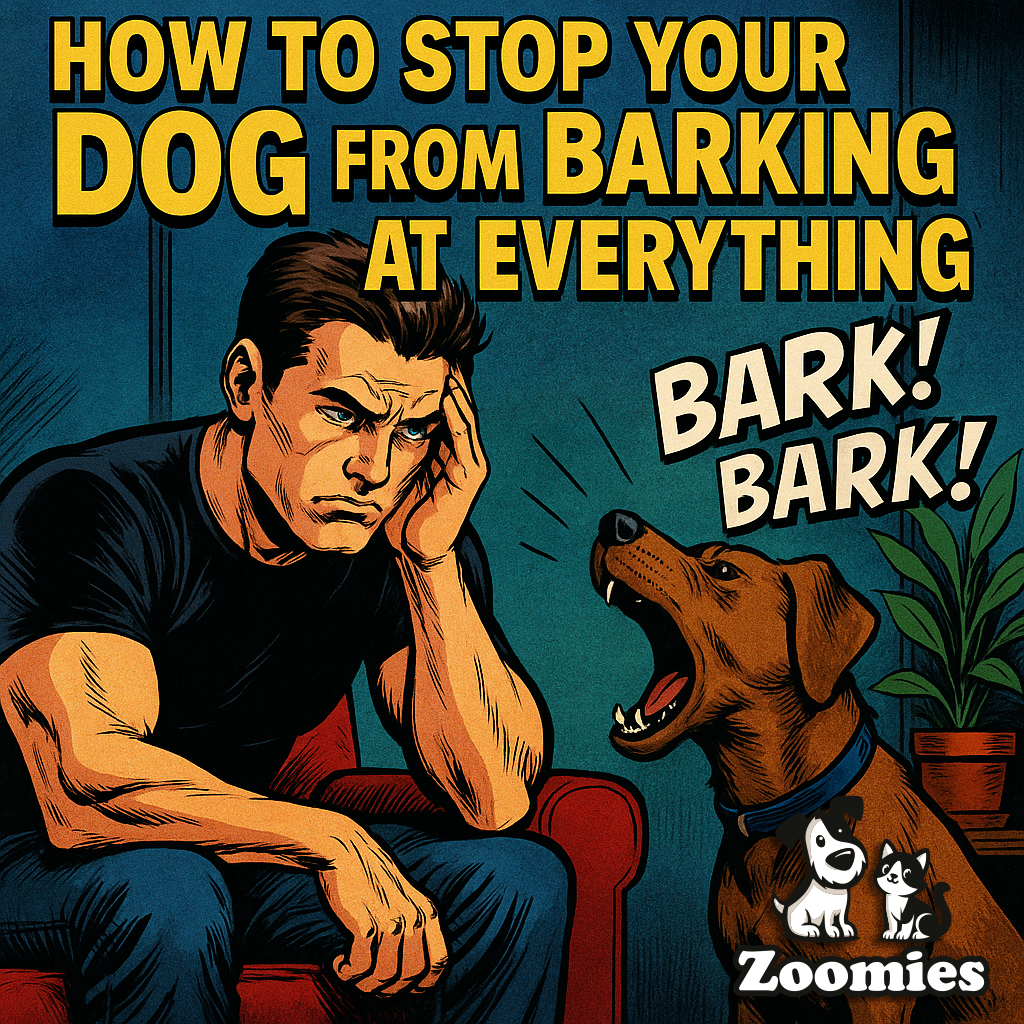🐶 How to Stop Your Dog from Barking at Everything

Does your dog think it’s their sworn duty to alert you every time a leaf blows by? 🍃 Doorbell rings? Neighbor sneezes? Squirrel blinks? Yep — it’s a common story. While barking is natural, too much barking can be stressful for both of you.
Don’t worry — with a few smart strategies (and a lot of patience), you can help your pup find their “quiet” side while still feeling heard and safe.
🗣️ Why Dogs Bark So Much
First, remember: barking isn’t bad. It’s communication! Dogs bark because they’re…
-
Excited 🐾 (“You’re home!”)
-
Protective 🛡️ (“That’s MY yard!”)
-
Bored 😐 (“I have nothing to do!”)
-
Fearful 😨 (“That noise is scary!”)
-
Seeking attention ❤️ (“Play with me!”)
Once you understand why your dog is barking, you can address the cause — not just the noise.
🚪 1. The Doorbell Drama
Few things trigger barking faster than a doorbell. To fix it:
-
Desensitize gradually: Play a recorded doorbell sound at low volume. When your dog stays calm, reward with treats. Slowly increase the volume over time.
-
Pair the sound with calm behavior: Teach “go to your spot” when the door rings. Reward calm waiting with praise.
Before long, your dog will think the doorbell means good things happen instead of code red alarm mode.
🧍 2. Barking at Strangers or Neighbors
If your dog barks at people walking by the window or fence:
-
Block the view. Use frosted film or curtains to reduce visual triggers.
-
Redirect attention. Call their name, then reward when they turn away from the trigger.
-
Reward quiet moments. Every time they don’t bark at something they normally would, offer a treat.
Calm behavior gets rewarded — over time, barking loses its purpose.
🐿️ 3. Barking at Other Animals
If your pup goes into full “DEFCON 1” when spotting another dog or squirrel:
-
Distance is key. Move farther away until they notice but don’t react. Reward calm focus on you.
-
Teach “Look at me.” When they glance at you instead of the trigger, give a treat immediately.
-
Stay consistent. Reactivity takes time to unwind — progress happens in small, quiet wins.
🧸 4. Barking Out of Boredom
A tired dog is a quiet dog. If barking seems random or restless:
-
Add daily exercise and mental enrichment (walks, sniffing games, puzzle feeders).
-
Rotate toys to keep playtime exciting.
-
Teach short training games like “find it” or “touch” to keep their brain busy.
💬 5. Attention-Seeking Barking
Does your dog bark when you’re on the phone or working? Try the “quiet earns attention” rule:
-
Ignore barking completely — no talking, touching, or eye contact.
-
The moment they stop barking, calmly say “Good quiet” and offer attention.
-
Be consistent — they’ll quickly learn silence speaks louder than noise.
💤 6. Barking from Anxiety or Fear
If your dog’s barking stems from fear (thunderstorms, separation, etc.):
-
Provide a safe, cozy space (crate or covered bed).
-
Use calming aids like white noise, snuggle toys, or dog pheromone diffusers.
-
Don’t scold — comfort quietly and reassure through calm energy.
If it’s severe, talk to your vet or a trainer about behavior therapy options.
🎯 Bonus Trick: Teach the “Quiet” Command
-
Wait for a bark (yes, on purpose!).
-
Say “Quiet” in a calm voice.
-
When they stop, even for a second, reward and praise.
-
Repeat until they associate “Quiet” with pausing their bark.
❤️ Final Thoughts
Your dog isn’t “bad” for barking — they’re just trying to communicate. With consistency, patience, and positive reinforcement, you can turn the chaos into calm. Soon, those noisy moments will fade into quiet confidence (and fewer side-eyes from your neighbors). 😉

